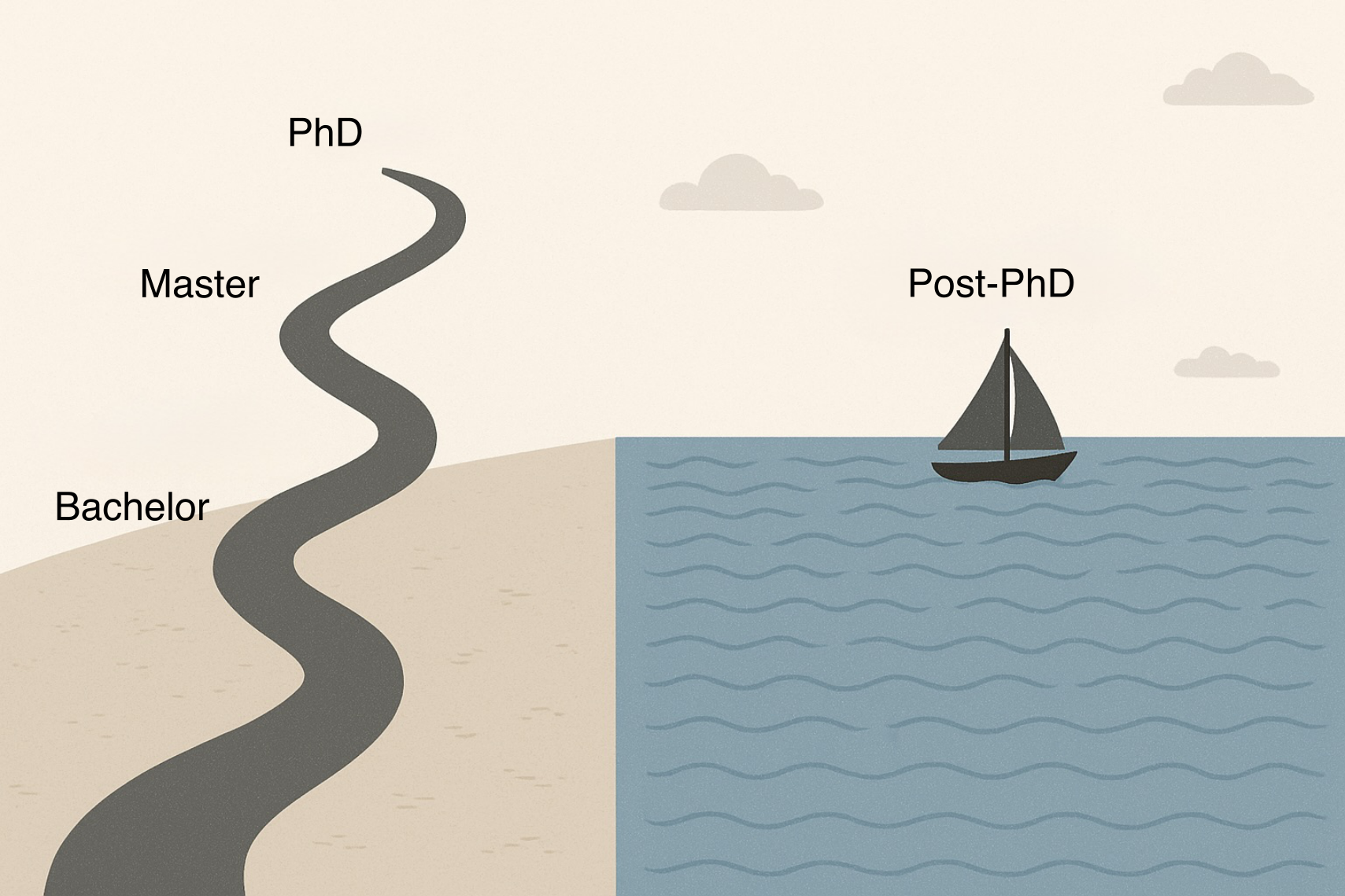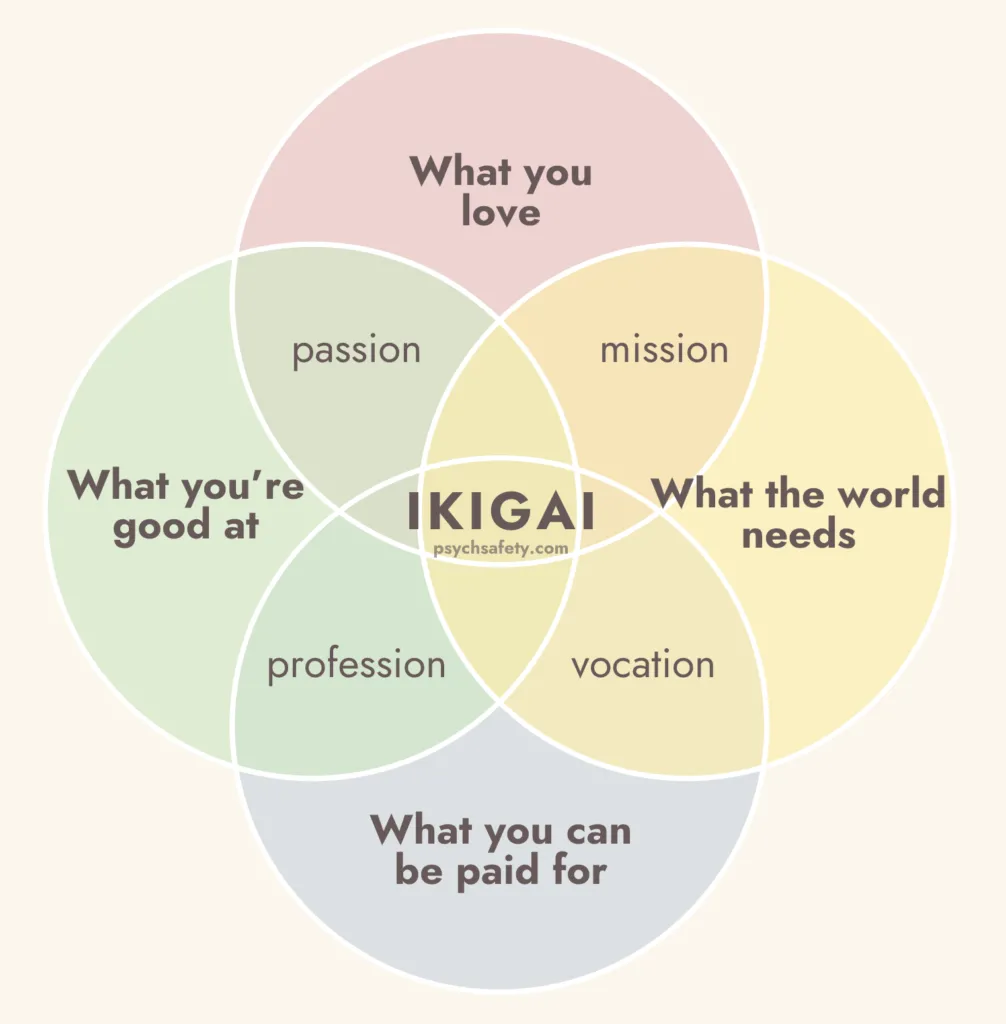Finding my employability after the PhD
When I first heard the word employability, I thought it simply meant getting a job. But after finishing my PhD and stepping into the job-hunting world, I realised it’s something far more complex and personal.
In today’s blog, I’d like to share my ongoing journey of understanding my own employability. I haven’t secured a job yet, so this post might sound a little uncertain or even negative at times. But that’s exactly where I am, figuring things out in real time.
From a clear path to an open sea

One night, my husband and I were talking about how our career landscape have changed. Before the PhD, the path ahead felt like a road on solid ground: clear, predictable, and paved with milestones: bachelor’s, master’s, PhD.
But once I reached the end of that road, it was as if the ground disappeared beneath my feet.
Now, I find myself sailing on an open sea with no marked routes, but only possibilities stretching endlessly in all directions. The world suddenly seemed full of options—postdocs, industries, government jobs, yet I didn’t know where to go or even how to start navigating.
What is employability?
At first, I thought “employability” was just another buzzword universities use. But during the recent Employability Symposium attended at UNSW I had a lightbulb moment: this is the word I’ve been looking for all along.
According to Wikipedia, employability refers to the attributes of a person that make them able to gain and maintain employment,
A line from the symposium stuck with me even more: “To be employed is to be at risk; to be employable is to be secure.”
That’s when I realised employability isn’t about finding a job, but about understanding who I am, and the unique value I can bring to society.
Ironically, this has been the most time-consuming and confusing part of my job-hunting journey — not sending out applications, not preparing for interviews, but trying to understand myself.
The four parts of Employability
One framework that helped me think about this is the Japanese concept of Ikigai — the intersection of:
- what you love,
- what you’re good at, and
- what the world needs.
- and what you can be paid for

Towards the end of my PhD, I was overly optimistic and driven by curiosity. I loved the idea of AI for biology and medicine and thought it was exactly what the world needed. But when I started reading job ads, I realised I didn’t yet have the required skills— In fact, I couldn’t even understand many of the keywords.
I was missing one key piece of the puzzle — what I’m good at.
That discovery was humbling but necessary.
The Long process of translating myself
In the past few months, I’ve rewritten my CV coutless times, and each version represents a different version of myself tailored to the job description: data scientist, quantitative researcher, postdoc.
Job hunting has forced me to translate my academic experience into the language of industry. Every job ad became a mirror showing me what I had and what I lacked.
There were so many moments like:
- “Oh! I didn’t know I already have that skill!”
- and also, “I really wish I had learned that during my PhD…”
If I could go back, I would start learning to articulate my employability during my PhD — not just assume that a degree alone would naturally lead to a job.
Turning Frustration into Visualisation
Well, as someone who loves data and visualisation, I couldn’t resist asking: what does all this job-hunting data actually look like?
How could I end this blog without a visualisation?
This was my first attempt at analysing text-based data — I used job descriptions as the input, extracted keywords, and projected them using PCA to map the landscape of positions I’ve applied for. Each point represents one job; together, they form a visual summary of my search so far.
As you might guess, most of the applications end up with rejection. Reality is painful, but honestly, playing with these data was fun.
At first, I felt deeply frustrated, convinced my employability must be terrible because of the rejections. But when I looked at the actual numbers, I realised I had only sent out ten applications in total. Statistically speaking, I’m still in the very early stage of job hunting.
So — fingers crossed for the best!
Final thoughts
If you’re also in the middle of job hunting, I want to say this: I wouldn’t have known how challenging it is to find a job in Australia right now if I hadn’t gone through it myself.
But I’ve also realised this process is more than just career exploration — it’s a journey of self-awareness.
So take care of yourself. Be patient. Keep learning. It’s hard, but you’re not alone.
Hang in there — and hopefully, we’ll both see the light at the end of the tunnel soon.
Enjoy Reading This Article?
Here are some more articles you might like to read next: